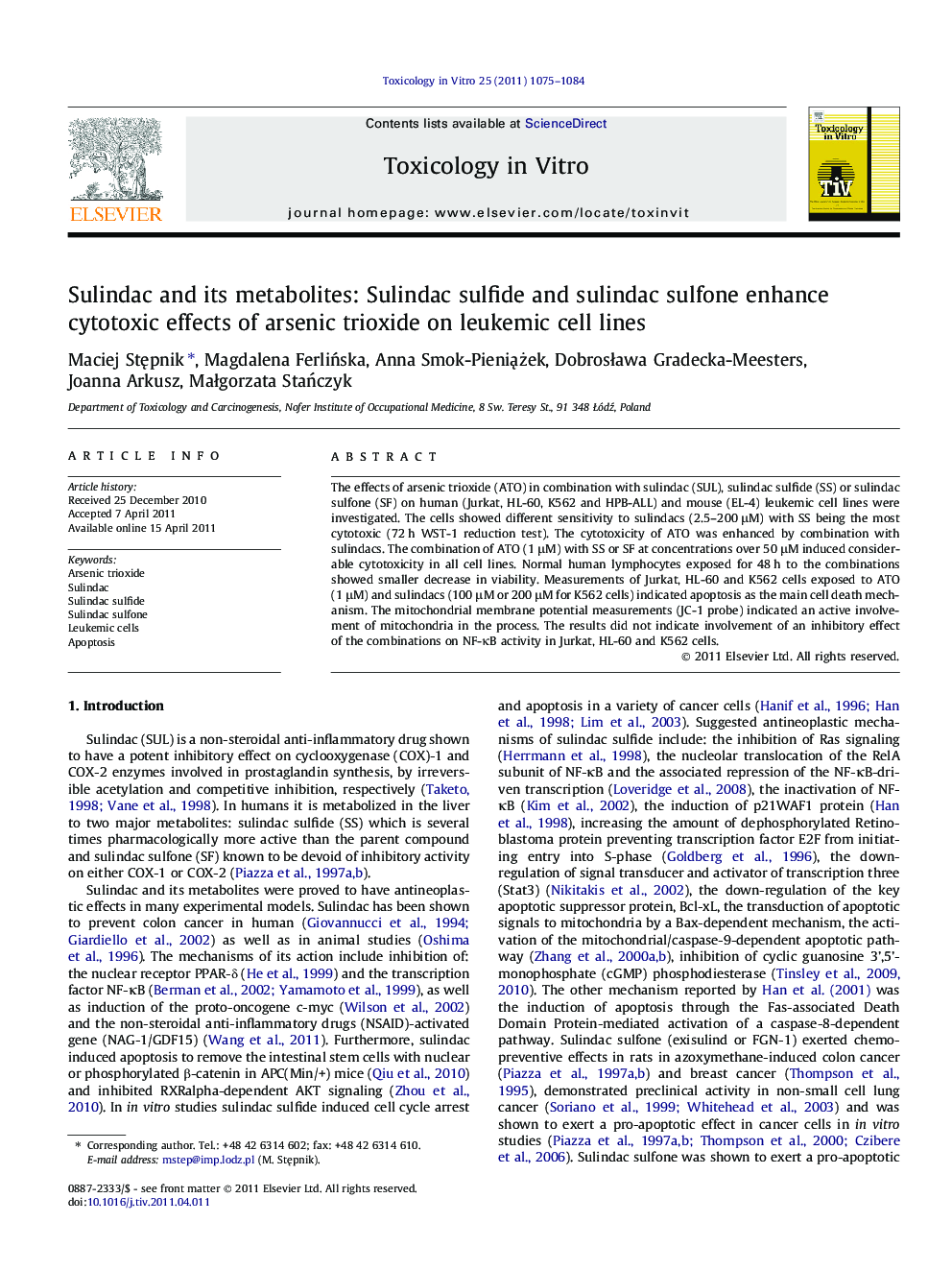| Article ID | Journal | Published Year | Pages | File Type |
|---|---|---|---|---|
| 2602617 | Toxicology in Vitro | 2011 | 10 Pages |
The effects of arsenic trioxide (ATO) in combination with sulindac (SUL), sulindac sulfide (SS) or sulindac sulfone (SF) on human (Jurkat, HL-60, K562 and HPB-ALL) and mouse (EL-4) leukemic cell lines were investigated. The cells showed different sensitivity to sulindacs (2.5–200 μM) with SS being the most cytotoxic (72 h WST-1 reduction test). The cytotoxicity of ATO was enhanced by combination with sulindacs. The combination of ATO (1 μM) with SS or SF at concentrations over 50 μM induced considerable cytotoxicity in all cell lines. Normal human lymphocytes exposed for 48 h to the combinations showed smaller decrease in viability. Measurements of Jurkat, HL-60 and K562 cells exposed to ATO (1 μM) and sulindacs (100 μM or 200 μM for K562 cells) indicated apoptosis as the main cell death mechanism. The mitochondrial membrane potential measurements (JC-1 probe) indicated an active involvement of mitochondria in the process. The results did not indicate involvement of an inhibitory effect of the combinations on NF-κB activity in Jurkat, HL-60 and K562 cells.
► Arsenic trioxide with sulindac, its sulfide or sulfone on five leukemic cell lines. ► Synergistic cytotoxicity of ATO (1 μM) with SS or SF at 50 μM in all cell lines. ► Normal human lymphocytes considerably less sensitive to the combinations. ► Apoptosis is the main cell death mechanism after exposure to the combinations. ► No indication of an inhibitory effect of the combinations on NF-κB activity.
